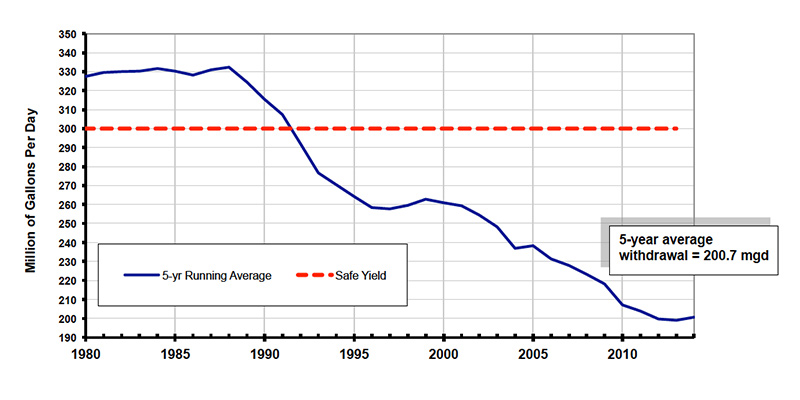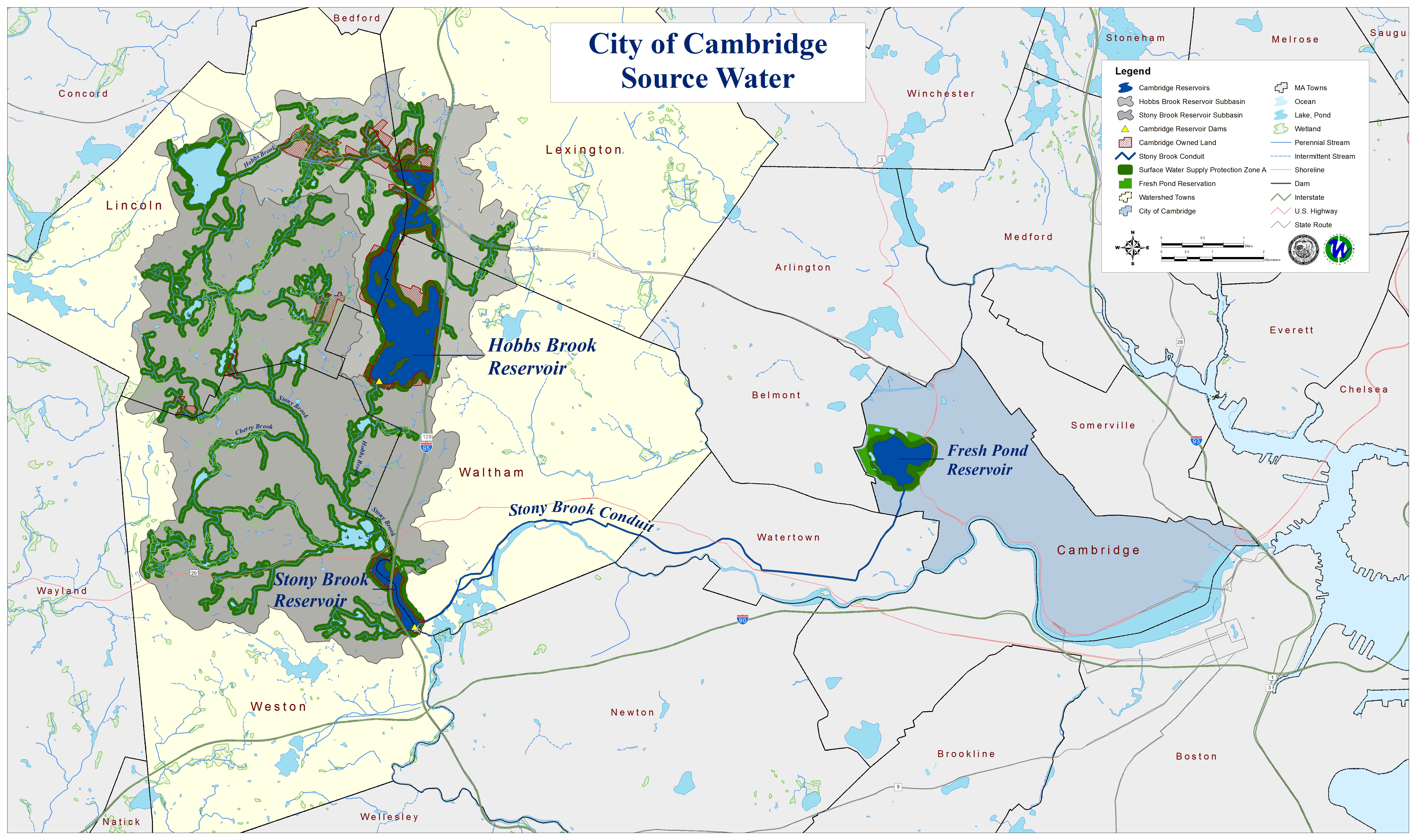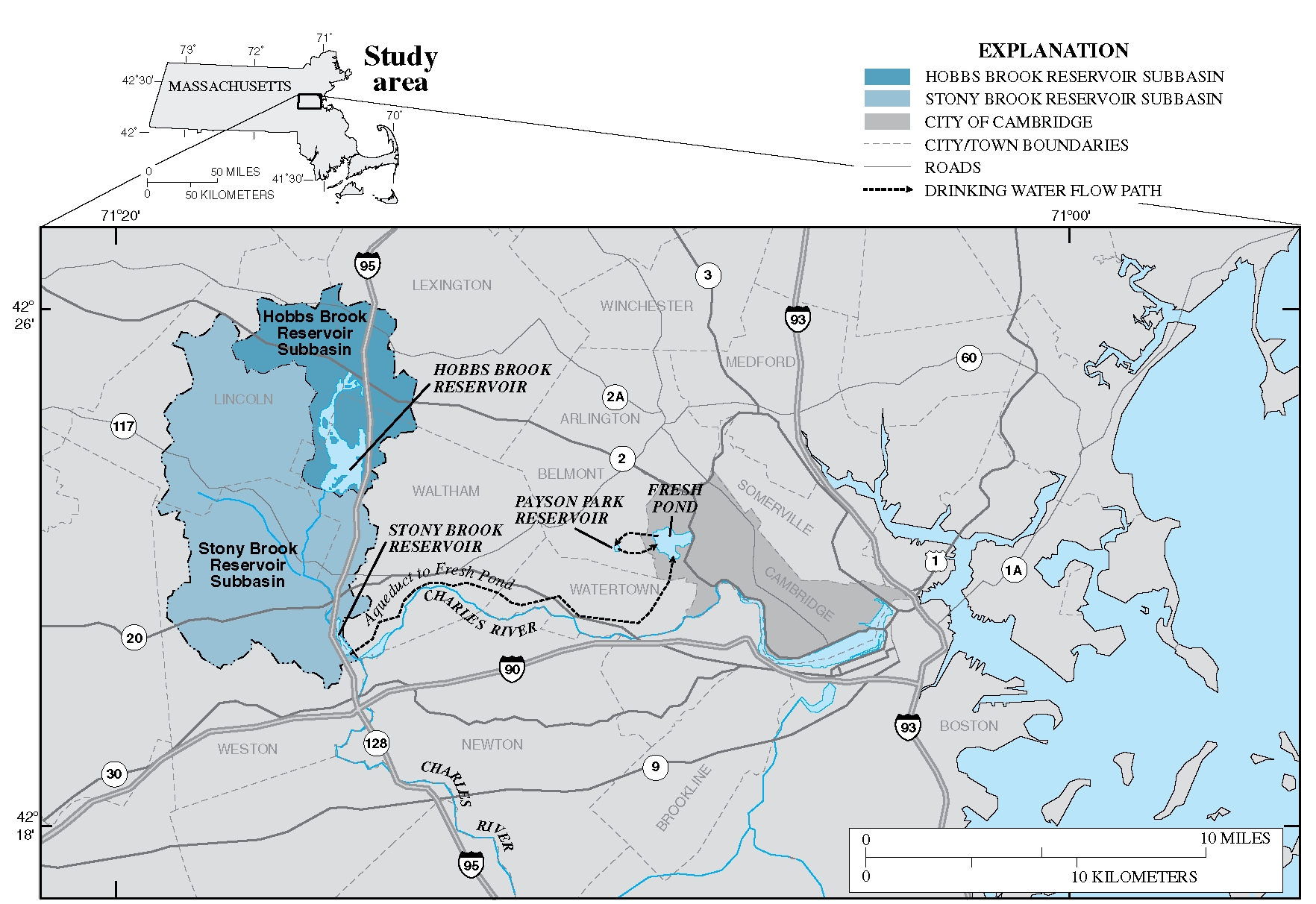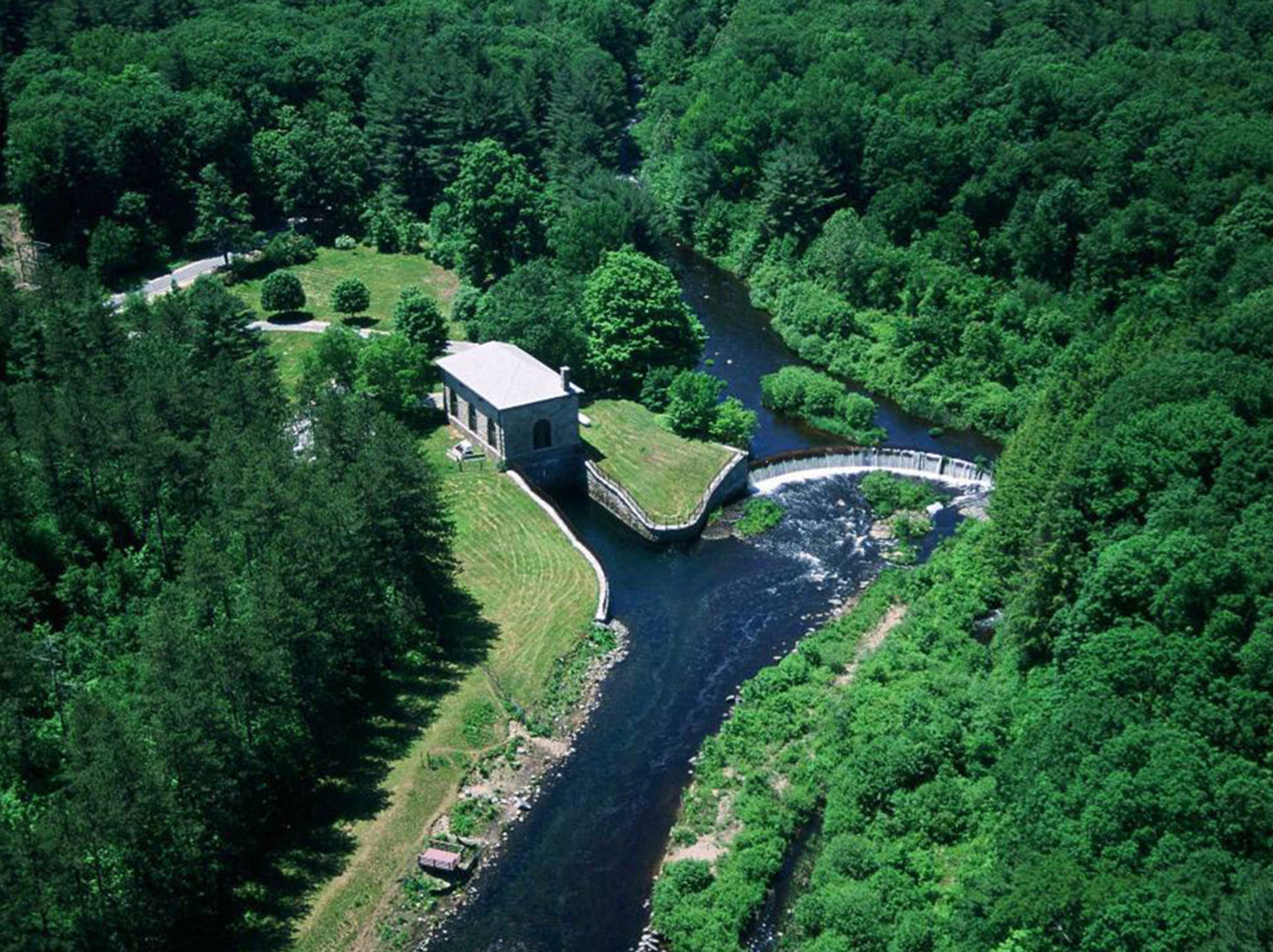- Joined
- Dec 10, 2011
- Messages
- 5,599
- Reaction score
- 2,717
Re: Water
How'd we (you?) get to 230? 230 would be a freakish +15% YOY vs what the MWRA site says (Where most swings are single-digit % and the bigger moves are downward):
http://www.mwra.state.ma.us/04water/html/wsupdate.htm
In the 1980s we were drawing 65% MORE; 330mgd/avg...10% above "sustainable"... for a sustained period of time:

Here's what we did to drop that (in the face of rising metro population)
Basically, technology leaves us a whole 'nother round of such conservation improvements, which can be "built" through a combination of plumbing codes and price hikes:
Municipal water supply is *way down* on my "big ticket" list of priorities compared to sea level rise, smart electric grid, & ground transportation. We know how to manage water and we have a proven track record of doing it (and Californians to act as guinea pigs in whatever that next round of consumption-reduction technologies is going to be)
The MWRA has clear numbers on what is a sustainable draw from the Quabbin and the whole system. 300 million gallons per day. And we are at around 230 million gallons per day.
How'd we (you?) get to 230? 230 would be a freakish +15% YOY vs what the MWRA site says (Where most swings are single-digit % and the bigger moves are downward):
http://www.mwra.state.ma.us/04water/html/wsupdate.htm
2017 195.40 mgd/avg
2016 208.01 mgd/avg
2015 206.57 mgd/avg
2014 200.85 mgd/avg
2013 202.80 mgd/avg
2012 194.70 mgd/avg
2011 196.60 mgd/avg
2010 204.30mgd/avg
2009 194.30 mgd/avg
2008 205.60 mgd/avg
2007 219.90 mgd/avg
In the 1980s we were drawing 65% MORE; 330mgd/avg...10% above "sustainable"... for a sustained period of time:

Here's what we did to drop that (in the face of rising metro population)
- Vigorous leak detection and repair efforts on MWRA and community pipes
- Retrofitting 370,000 homes with low-flow plumbing devices
- A Water Management Program for area businesses, municipal buildings and nonprofit organizations
- Extensive public information and school education programs
- A change in the state plumbing code requiring new toilets to be 1.6 gallon per flush
- Meter improvements that helped track and analyze community water use
- New water-efficient technology that has created reductions in residential use
- Water pipeline replacement and rehabilitation projects throughout the MWRA and community systems.
Basically, technology leaves us a whole 'nother round of such conservation improvements, which can be "built" through a combination of plumbing codes and price hikes:
- California style 1.28 gallon per flush toilets
- Hot water recirculation (no more "running the tap")
- Greywater irrigation & drip irrigation
- Municipal (distribution pipe) leak fixing
- rolling change to Water Sense appliances
Municipal water supply is *way down* on my "big ticket" list of priorities compared to sea level rise, smart electric grid, & ground transportation. We know how to manage water and we have a proven track record of doing it (and Californians to act as guinea pigs in whatever that next round of consumption-reduction technologies is going to be)
Last edited:





